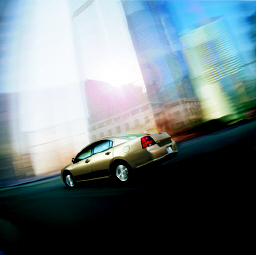|
MITSUBISHI MOTORS CORPORATION
MORE THAN A CENTURY OF
INNOVATION!
 Mitsubishi Motor Corporation - generally just called Mitsubishi Motors - is the fourth largest car-manufacturer in Japan. It is part of the Mitsubishi Keiretsu, formerly Japan's largest industrial group. Mitsubishi Motor Corporation - generally just called Mitsubishi Motors - is the fourth largest car-manufacturer in Japan. It is part of the Mitsubishi Keiretsu, formerly Japan's largest industrial group.
The Tsukumo Shokai Shipping Company was founded in 1870 and was the basis of what was to become Mitsubishi Heavy Industries. They launched the "Mitsubishi Model-A" project in 1917 and so were one of the pioneers of Japanese mass-production passenger cars.
Mitsubishi Motors finally became an independent company in 1970 when the automobile division was spun off from Mitsubishi Heavy Industries, producing cars, trucks and busses and floated in 1988.
The Model-A was an entirely hand-built seven-seater sedan based on the Fiat Tipo 3 but it proved expensive compared to its American and European mass-produced rivals and production was discontinued in 1921 after only 22 had been built.
Mitsubishi Internal Combustion Engine Co., Ltd. was established in 1920 to manufacture aircraft engines and was renamed the Mitsubishi Aircraft Co. in 1928, before being merged with Mitsubishi Shipbuilding in 1934 to create Mitsubishi Heavy Industries (MHI).
After WWII, MHI was split into three regional companies, only to be re-integrated in 1964. The country's major need at this time was for commercial vehicles, the situation being further complicated during the first few years by a severe fuel shortage. Private vehicle production was largely confined to Mitsubishi's first scooter.
By the beginning of the 1960s, however, Japan's economy had improved dramatically and so did the need for the family car. The Mitsubishi 500, a mass market sedan, was introduced to meet this demand, followed in 1962 by the Minica four-seater subcompact car and the Colt family car.
By 1967 Mitsubishi was producing 75,000 cars a year and as a result of continued growth they decided to make a single automotive company.
As Japan focused on its national export strategy so Mistubishi too forged strong overseas alliances and in 1971 Mitsubishi sold U.S. automotive giant Chrysler a 15% share in the new company. Chrysler began selling rebadged Galants in the United States pushing MMC's annual production beyond 250,000 vehicles.
Mitsubishi finally achieved annual production of one million cars in 1980 as it continued to grow internationally and in 1982, the Mitsubishi brand was finally introduced to the American market. By 1989, Mitsubishi's worldwide production, including its overseas affiliates, had reached 1.5 million units.
By early nineties the SUV has begun its rise to become the world's favourite car type even in crowded Japan and so with the renowned Pajero and Mitsubishi saw its domestic market share rise nearly 12% in the mid-90's.
Mitsubishi has almost half a century of international motorsport experience though tending towards the challenge of off-road racing more than track. It dominated the East African Safari Rally in the '70s, the Dakar Rally from the '80s, and much of the World Rally Championship through the '90s making its Lancer EVO cars a market leader. As ever motorsport helps refine the product for the average driver
After some years of decline and financial problems the company is again growing and new models and technological developments will take its sales to over 1.5million units in 2007.
Top of
the page |